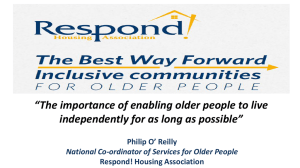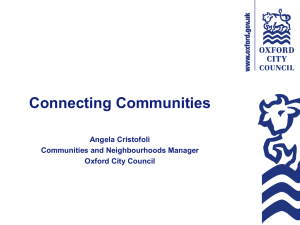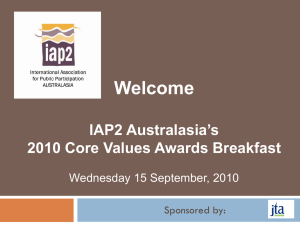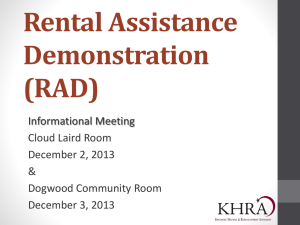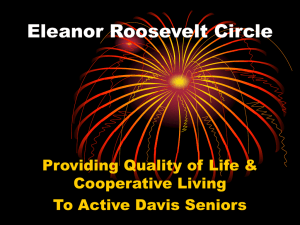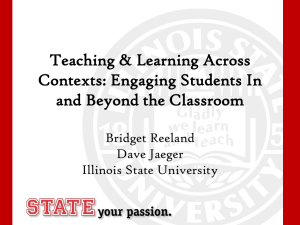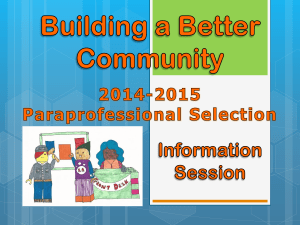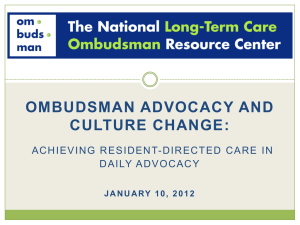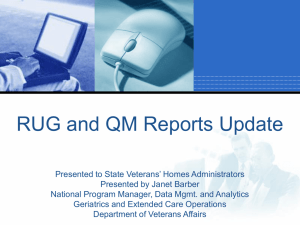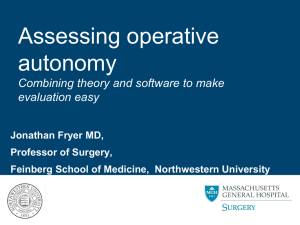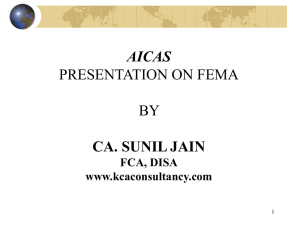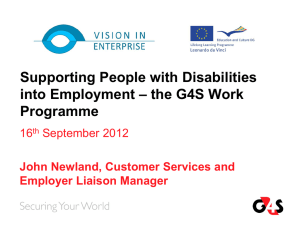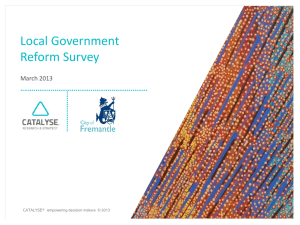File
advertisement
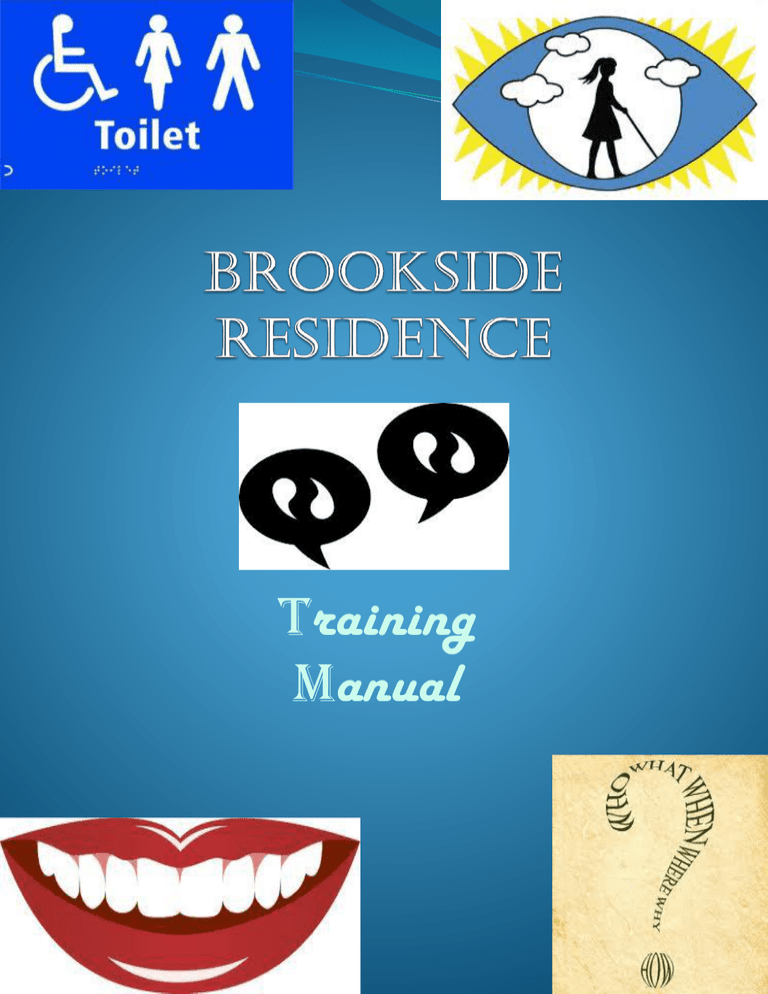
Training Manual Welcome to Brookside Residence Our service users will be very pleased to see a new face around here! The people we are helping here are very friendly and completely harmless. However, they have various issues which make it difficult for them to go through education, such as hearing impairments, visual impairments, English as an additional language and muteness. However saddening these learning difficulties may seem to us, these young adults will push the barriers aside and live a full, happy life. But they cannot do it without us, nor can they do it without you. This booklet will show you how you can help. Contents Listening Open and Closed Questions Paraphrasing and Gestures (Head Summarising and Hand Movements) Eye Contact Signs, Symbols and Facial Expressions Pictures and Posture Special Methods Proximity Appearance We have always got your best interests at heart. If at any time you feel unsure or unhappy about something, feel free to consult a fellow member of staff. Listening Listening consists of not talking and concentrating on what is said. It is important to listen when communicating with our residents because they may be difficult to understand or they may be trusting you to pay attention if they cannot see you. A good time to concentrate on listening is with any EAL resident, because they are likely to have an accent and may also get words wrong. This means that you need to focus well on what they are saying to understand them. It is beneficial to both one-to-one situations and group situations because it allows you to know any verbal messages coming towards you. However, if Kris, the resident without speech, is involved in either type of situation then listening will not help in receiving his message at all. Overall, this is a very effective way of enabling communication because otherwise we would be unaware of what others want us to know. Open and Closed Questions Closed questions only require a “yes” or “no” response , while open questions need a reply which is more elaborate. Closed questions make it easier for EAL or mute residents to answer; open questions give residents the chance to explain their point. A closed question you might use is “Are you feeling better this morning?” On the other hand, an open question might be “What seems to be the problem?” Open questions allow you to get more detail in a one-to-one situation, but in a group situation would probably create confusion or slow down the conversation. Closed questions would make conversations easier for those with language and speech difficulties, but could also create awkward silences. Overall, open questions are very effective as they allow people to open up more, while closed questions are almost as effective because they simplify communication. Paraphrasing and Summarising Paraphrasing is repeating back what people have said using their own words and phrases, whereas summarising is repeating back what the person has said in a different way to how they said it originally. These both allow service users to know that you were listening and to check that you understood what you were hearing. A resident may say “I have a headache and I feel sick.” Paraphrasing it would be “Oh dear, you have a headache and feel sick?” but summarising would be “Poor you, you don’t feel well?” Using these techniques in a one-to-one situation will create a stronger conversation by showing the resident that you are engaged in it; it also aids group chats as you can check what someone said if more than one person is talking. However, paraphrasing in either situation could potentially make it long-winded. Overall, paraphrasing and summarising are both really effective at enabling communication because it proves listening and allows mishearing to be corrected. Eye Contact Eye contact is looking into someone’s eyes while you are talking, with them looking into your eyes. This shows honesty and trust between speaker and listener. For example, with any resident wishing to tell you something personal, if you directly look them in the eye then they will be more willing to tell you as they will be able to see that you are going to handle their information with care. In a one-to-one format, eye contact would enforce confidentiality, while too much may be disturbing by appearing slightly perverted. In a group, eye contact is challenging as you would constantly be looking between people and it would be impossible to maintain it with any one person without seeming to ignore the others; however, a reasonable amount of eye contact with each person would create a more comfortable environment. In either case, visually impaired residents would be unaffected. Overall, eye contact is quite effective at enabling communication as it shows loyalty and concentration. Facial expressions and posture Facial expressions are combinations of movements of your eyes, mouth and eyebrows. Your posture is how straight your body is when sitting or standing. Both of these are closely linked with your emotions and are therefore very effective in showing residents how you feel or vice versa. If you are sitting up straight (but not stiffly) and are smiling then this shows happiness and can also show confidence. In a group situation, these non-verbal cues are helpful because everyone, apart from visually impaired residents, will be able to use them to know how you feel even if at that point you are focussing on one person. With one-to-one, it allows the listener to get more information than simply what is being said. Controversially, it may be inaccurate or may give away things that were intended to stay a secret. Overall, facial expressions are very effective due to showing the other person exactly how you feel, whereas posture is less so because you may naturally slump out of habit and comfort. Proximity Proximity is how close or far away you are from someone. Thinking about proximity while at Brookside is important because while you want to be close enough to the residents to be able to communicate well, you do not want to get too close and make the residents feel awkward or harassed. When talking to any resident, sitting opposite them at a comfortable closeness would enable the most accurate communication. In any situation, being conscious of proximity is always good because you can then be sure that communication will be both easy and comfortable. However, visually impaired residents would have trouble managing proximity alone because they would be unable to see the distance between them and others. Overall, proximity is not the most effective at enabling communication but can still have quite a big impact at times. Appearance Appearance is how you look because what you are wearing, how much make-up you have on, what piercings you have, etc. The way you dress and present yourself can affect how residents perceive you and therefore respond to you. For instance, if you have a tattoo sleeve but you cover it up, you are less likely to make residents feel intimidated and so they will probably open up to you better. Gestures There are two types of gestures: hand movements, such as waving or thumbs up, and head movements, like nodding or looking down. Most gestures are universal, meaning that anyone in the world would understand them. For example, if you shake your head at a visually impaired resident, they will realise that you are saying “no”. Signs, Symbols, Pictures Signs, symbols and pictures are all visual aids, usually universal. They greatly assist and enhance communication and also independence. For example, if the fire alarm sounds then EAL residents will know where to go if they see a sign showing a man running through a door away from flames. Special Methods The main type is makaton, which is using hand signals or pictures to back up the keywords in a sentence. Most of our EAL, mute and hearing impaired residents use it to learn and interact, e.g. when they are talking between themselves. Another special method we use is Braille, a series of raised dots on a page in certain patterns to represent letters. Our visually impaired residents use it for reading by running their fingers over it, for instance when they have a form to fill in.


